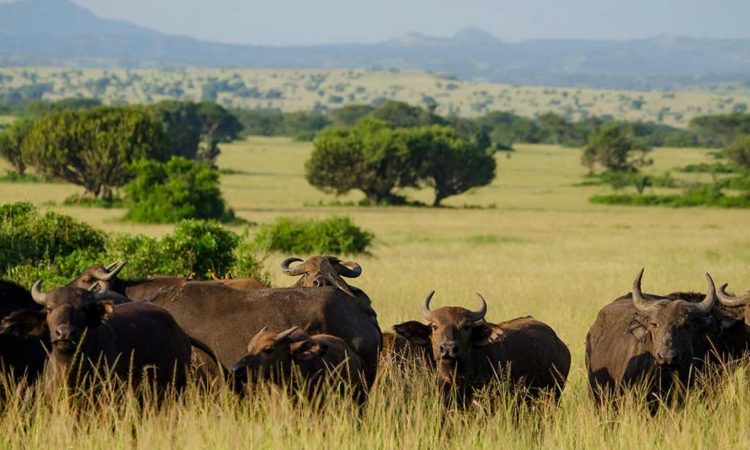On June 13 2022, the Uganda Wildlife Authority gave UGX 3,388,186,504 in the Tourism Revenue Sharing (TRS) program to local communities adjacent to Bwindi and Mgahinga Conservation Area in southwestern Uganda.
In a handover ceremony, the Minister of Tourism, Wildlife and Antiquities Rtd. Col. Tom Butime handed over revenue cheques to leaders of Kisoro, Kanungu and Rubanda districts.
The ceremony was also attended by UWA board of trustees’ members who were led by Dr. Panta Kasoma, the chairperson of the board. UWA was also represented by Ag. ED John Makombo, a senior staff at the agency.
Hon. Butime explained that local communities living next to the protected areas do not only keep guard of the resources but also suffer most from the cost of conservation. Therefore, the government gives back to the communities to make the communities appreciate their role in protecting these resources.
The UWA Board of Trustees Chairperson Dr. PantaKasoma said that UWA revised the Tourism Revenue Sharing Guidelines in order to make communities benefit more from the program. He said that the funds given out to the local communities adjacent to Bwindi Impenetrable National Park and Mgahinga Gorilla National Park, will be put into good uses that the locals realize economic values.
On behalf of the district leaders, District Chairperson Rubanda Kasyaba Stephen thanked UWA for the great partnership and collaborating well with communities that surround Bwindi Mgahinga Conservation Area. He pledged to continue with cooperating strongly with the institution to ensure communities protect the wildlife but also feel the benefits that accrue from its protection.
The function was attended by among others, Chairpersons, Resident District Commissioners, Chief Administrative Officers and other technical officers from the six districts that neighbor Bwindi Mgahinga Conservation Area in Kanungu, Kisoro and Rubanda.
How the 3.38 Billion will be spent
The 5% of the 3.38 billion Uganda shillings will be sharedamong the parishes and districts that share borders with either Mgahinga national park or Bwindi impenetrable Forest. This is to carry out supervision on the projects approved to receive money through the revenue sharing initiative.
95% of the 3.38 billion Uganda shillings will be distributed into two; funding household projects and funding community projects.
The household projects are mainly fund agriculture activities for the community residents ranging from tree growing, tea growing, irish growing among several other agricultural activities.
The community projects often range from putting up accessible water sources, schools, health centers among several other community empowerment initiatives.
What people are saying about UWA Revenue sharing
The Uganda Wildlife Authority has successfully given back to communities around Uganda National Parks since 1995 but according to some of the tour operators and other stakeholders in the tourism industry of Uganda feel there is more that needs to be done to ensure that there is a real impact felt through the revenue sharing initiative.
According to Mr. Makonzi Kiwanuka of Go Gorilla Trekking, the main challenge in most of the communities has been access to water, health care, education, roads and employment. If all the money that is shared among the different conservation areas per year was simply given to one conservation area in a year; a tangible outcome would be felt.
Constraints to UWA Revenue sharing
The biggest challenge in UWA’s revenue sharing initiative is accountability. A couple of years ago, Uganda Wildlife Authority had halted the Queen Elizabeth conservation area revenue sharing initiative demanding accountability for the money that had already been given.
In other instances, the projects that had received funding failed to kick off thus had to be terminated by UWA.
In conclusion, there are some success stories for the UWA’s Tourism Revenue Sharing initiative. Over 250 projects have been successfully funded since the inception of the initiative. However more efforts are needed to ensure that the impact is felt on a larger scale.







